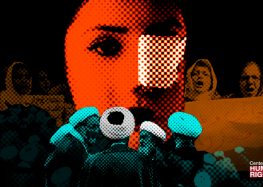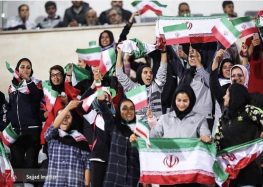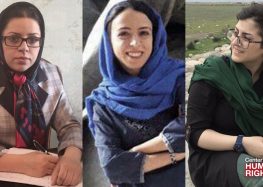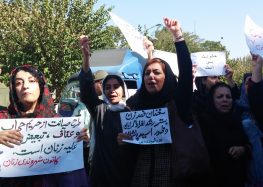Women’s Rights Activist Demands Rouhani Provide Reasons for His Exclusively Male Cabinet
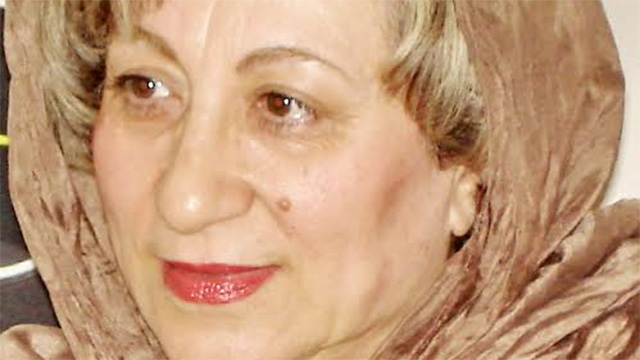
Women’s rights advocate Nahid Tavasoli.
President Hassan Rouhani must explain why he didn’t nominate women to serve in his new cabinet, feminist researcher Nahid Tavasoli told the Center for Human Rights in Iran (CHRI) in a recent interview.
“Dr. Rouhani should explain why and based on what expedient principle did he decide not to reinstate [Vice President for Women and Family Affairs] Shahindokht Mowlaverdi?” she said. “He made all these promises about utilizing competent women in key positions and ministries, but didn’t deliver. Why?”
“We are all aware that since the early days after the [1979] revolution, women have tolerated a lot of limitations with the hope that one day their aspirations for equality and fairness based on human and Islamic principles would come true,” said Tavasoli, the editor-in-chief of Nafe, an academic women’s periodical based in Iran. “There is nothing stopping them now. Why should they be restricted today?”
“There are so many women in charge of managerial posts [mid-level governmental posts] that if they stop working for a couple of days, the country would grind into the ground,” she added.
Civil rights activists and reformist politicians had high expectations that women, who were excluded from ministerial positions in Rouhani’s first term in office (2013-17), would be nominated to his new cabinet after his re-election on May 19, 2017. However, women were completely absent when he submitted his ministerial nominations to Parliament for approval on August 8.
“It’s wrong to think that men have a higher status or that they are more capable than women,” said Rouhani at his first press conference after his election on May 27.
“Of course men are better at some professions and women are better at others. [God] has given both their own special qualities,” he added. “But women are not lower than men and keeping them inside the house does not make sense from social or legal standpoints.”
Mowlaverdi, who during Rouhani’s second re-election campaign said “two or three” women would be appointed to his next cabinet, has been moved over to the position of vice president for citizens’ rights affairs. Her replacement is Masoumeh Ebtekar, who was the head of the Environmental Protection Organization in Rouhani’s first cabinet.
“Masoumeh Ebtekar has a lot of knowledge and experience about environmental issues, but has none in the field of women’s rights,” women’s rights advocate Tavasoli told CHRI. “Why Rouhani chose her as vice president for women’s affairs is beyond comprehension.”
Rouhani has also appointed a third woman to his inner circle of advisers: Laya Joneidi will be his vice president for legal affairs. Nevertheless, many women’s rights activists believe the make-up of Rouhani’s new cabinet is a setback for women’s aspiration for greater participation in high-level governmental positions.
“In his inauguration speech, Dr. Rouhani made several references to ‘people’s rights,’” said Tavasoli. “I have a question for him: Isn’t it the people’s right to expect you to carry out your promises?”
Tavasoli continued: “Everywhere in the world, slogans and promises lure voters to take part in elections. It has been the same in Iran, but after all the excitement of the campaign and the victory celebrations, people forget that they have a responsibility to work hard to make sure those slogans and promises are acted on. They become indifferent.”
“Our Iranian citizens, women and men, have gained the right to vote,” added Tavasoli. “It has become part of their expectations in life, but they are still not aware that they have other rights, too, such as the right to demand that the officials they voted for make good on their promises. This is the first thing we have to be self-critical about.”
In the 28 years since the establishment of the Islamic Republic of Iran in 1979, only one woman, Marzieh Vahid Dastjerdi, has served at the cabinet level—as minister of health in Mahmoud Ahmadinejad’s second term in office (2005-13).
The first female cabinet minister of the pre-revolutionary government, Minister of Education Farrokhroo Parsa (1968-71), was executed in 1980 by the new revolutionary government for allegedly introducing anti-Islamic policies.
The second ever female Iranian cabinet member, Mahnaz Afkhami, was minister for women’s affairs from 1975 until 1979 when she was forced into exile in the United States after the revolution.
Some women’s rights activists in Iran remain optimistic about the future of women under Rouhani’s second term.
“I think it would have been a lot better if Mr. Rouhani had appointed three women and at least one Sunni Muslim to ministerial positions and thrown the ball into Parliament’s court,” Islamic feminist and author Jila Movahed Shariat Panahi told CHRI. “Then he wouldn’t have been accused of making bad promises.”
“I see the future being very bright,” added Panahi. “Just the fact that three competent and experienced women [Ebtekar, Mowlaverdi and Joneidi] can participate in cabinet meetings is a welcomed opportunity. They can calmly and wisely defend citizens’ rights.”
Panahi said the mere appointment of a female minister would not necessarily be as helpful to the women’s movement in Iran as more women serving in Parliament.
“The Campaign for Changing the Parliament’s Male Face not only helped double the number of women elected to Parliament in 2016, but also increased male representatives who supported the nomination of female ministers,” added Panahi. “We saw a dramatic increase in the number of women elected to national councils as well.”
Seventeen women were elected in Iran’s February 2016 parliamentary elections, the highest ever since the revolution.

